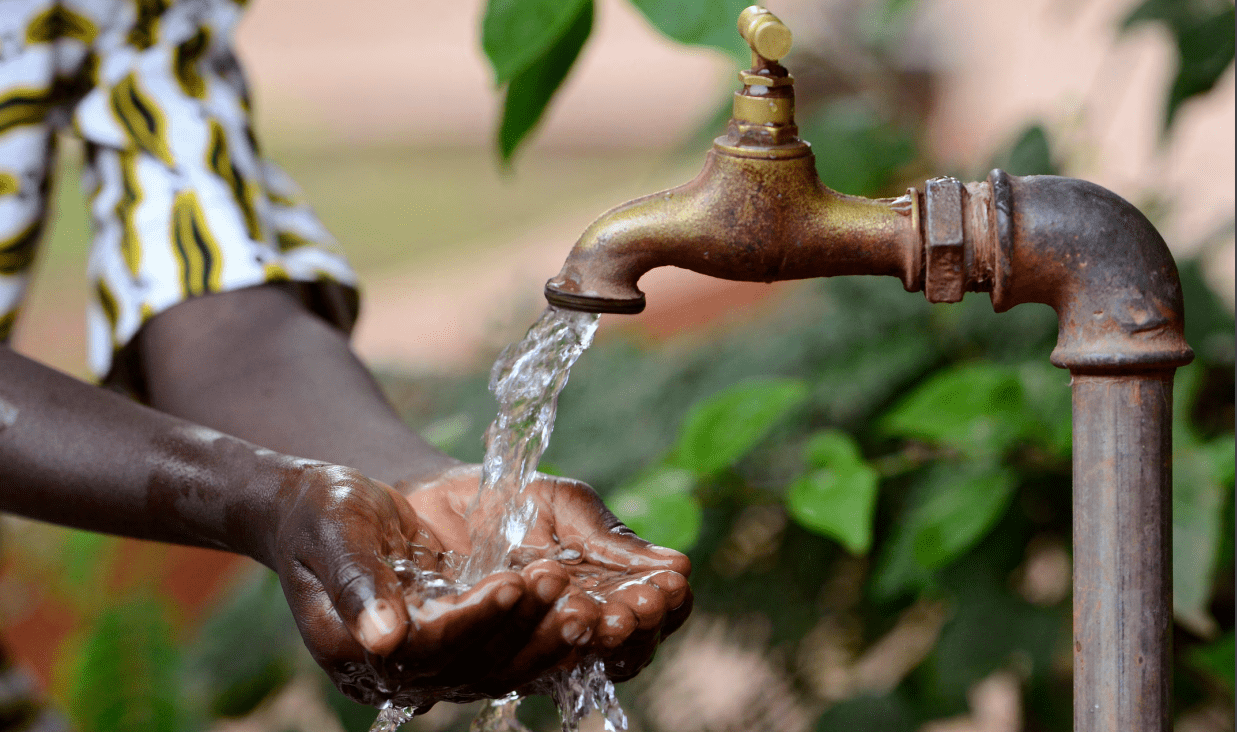
Investing in water is fundamental to climate action, food security, biodiversity, gender equality and a circular economy, says Katherine Stodulka, as a new report examines how blended finance structures can help transform the risk profile of water assets and services.
A new report, launched today at the World Economic Forum in Davos, shows how scaling investment in water infrastructure and services can deliver major climate, food security, health and economic benefits in emerging markets. Mobilising Capital for Water: Blended Finance Solutions to Scale Investment in Emerging Markets, commissioned by WaterAid and the Blended Finance Taskforce, reminds us that there is a USD 200bn annual investment gap for water.
However, the report finds that private capital can find investable opportunities, at scale, in the water sector – while generating outsized benefits for countries and communities – when blended with catalytic sources of public and philanthropic funding. The report provides a series of case studies demonstrating that “blending” capital with different risk profiles could have an outsized impact in unlocking additional investment for this sector which typically has a higher perception of risk.
”Public and development money alone will not bridge the huge funding gap – but it can kickstart and de-risk projects to unlock private capital. As our report shows, the potential is huge.
Tim WainwrightChief Executive of WaterAid, UK
Generating $500 billion in economic value
The report confirms that an additional USD 200 billion investment in water-related projects could generate USD 500 billion in economic value each year across a range of water assets and services. The major areas where blending can help unlock investment include
- ‘big water’ infrastructure (USD 157 billion investment opportunity);
- decentralised, small-scale sanitation and water solutions (USD 29 billion investment opportunity); and
- nature-based solutions including restoration and protection of watersheds (USD 21 billion investment opportunity).
“We are way off track reaching universal access to safe water, sanitation and hygiene by 2030, a goal the world has set itself,” said Tim Wainwright, Chief Executive of WaterAid in the UK. “People who don’t have access to water close to home are building their lives on quicksand.”
“To ensure they not only survive, but thrive, people need clean water for food and healthcare, and safe, decent toilets – especially women and girls.”
“Public and development money alone will not bridge the huge funding gap to make this a reality for millions of people across the globe – but it can kickstart and de-risk projects to unlock private capital.”
Calling on more collaboration across the public, philanthropic and private sector to accelerate, scale and optimise investment in this sector, the report sets out a number of core recommendations:
• Donor governments should support delivery of ‘public goods’ and deploy scarce concessional resources more catalytically to de-risk and crowd in private capital where assets are investable
• Philanthropies should play a pathfinder role, utilising flexible capital to innovate and scale new business models and trial new solutions to the barriers which currently prevent investment in the water sector
• Multilateral Development Banks (MDBs) and Development Finance Institutions (DFIs) should set mobilisation targets for their capital, embed a more strategic focus on water and sanitation into climate finance commitments and use more catalytic instruments like guarantees to blend capital for ‘big water’ infrastructure
• National governments should send clear signals to investors about favourable investment environment by communicating a clear, climate-integrated water strategy and implementing cross-sectoral enabling policy and regulation
• Project developers, entrepreneurs, incubators and NGOs should strengthen partnerships to ensure bankable solutions that attract private capital where possible
• Private investors can work with catalytic capital to pioneer early-stage development of water and sanitation assets and ensure their portfolios are aligned with planetary boundaries and the UN Sustainable Development Goals for water
• Academia and NGOs should standardise what ‘water positive’ assets and impact looks like
A high-performing, equitable water sector is within reach
The report highlights a range of examples of successful public and private investment in water. One example is the Rwandan Kigali Bulk Water Project, funded by a coalition of public and private financers, which is now providing an additional 40 million litres of water per day to Kigali’s one million residents. This would not have been possible without strong signalling from the Rwandan government, including establishing the Water Resources Board.
Another compelling example is the Upper Tana-Nairobi Water Fund where Coca Cola, a local electricity generation company, and Nairobi’s water and sewerage company partnered to support upstream interventions for water resource protection. This resulted in significant cost reductions for the companies. Health Insurance
The case studies in this report demonstrate that there is no need to reinvent the wheel. We must scale what is already working to create real opportunities for investors and entrepreneurs in emerging markets. Blended finance solutions for water can help mitigate risk and generate outsized returns for countries and communities. Scaling and mainstreaming these solutions is an absolute priority to mobilise large-scale finance for a sector which underpins the stability of the rest of the economy Short URL
What does the future of water finance look like?
The report predicts that private investors and infrastructure funds will take the lead in driving new water-related opportunities. This is already starting to happen; in 2021, Meridiam, a global investor and asset manager, successfully fundraised for a dedicated water fund, Meridiam Sustainable Water and Waste Fund (MSWWF) to acquire the New-Suez, as a route to develop and invest in water projects in emerging markets. Climate Fund Managers has launched ‘Climate Investor Two’ dedicated solely to water infrastructure. And entrepreneurs are raising funds for new technologies and enterprises to tap into underserved communities, like Feelwell Ceramics, a supplier of tailored sanitation solutions to rural communities in Indonesia.
Continuing this trend to scale private investment for equitable and sustainable water outcomes requires significant, sustained, and collective effort on the part of players across the financial ecosystem. But the economic prize is worth it – for people, planet and investors
“Mobilising Capital for Water: Blended Finance Solutions to Scale Investment in Emerging Markets” has been developed by WaterAid and the Blended Finance Taskforce.
To find out more about the role of blended finance in sustainable development, please get in touch – [email protected].

